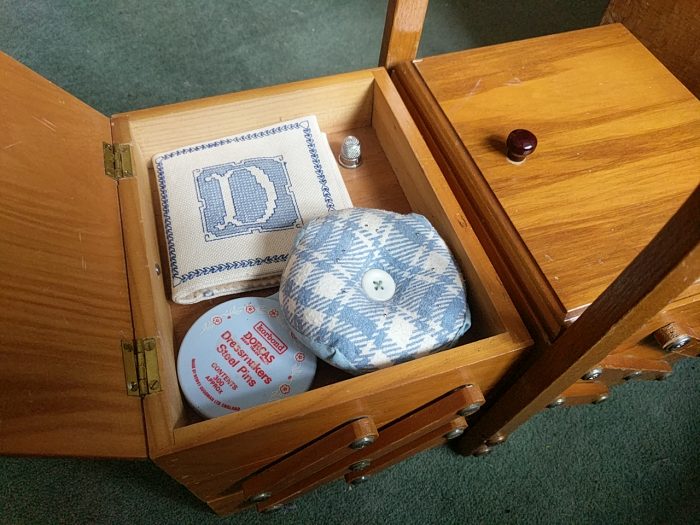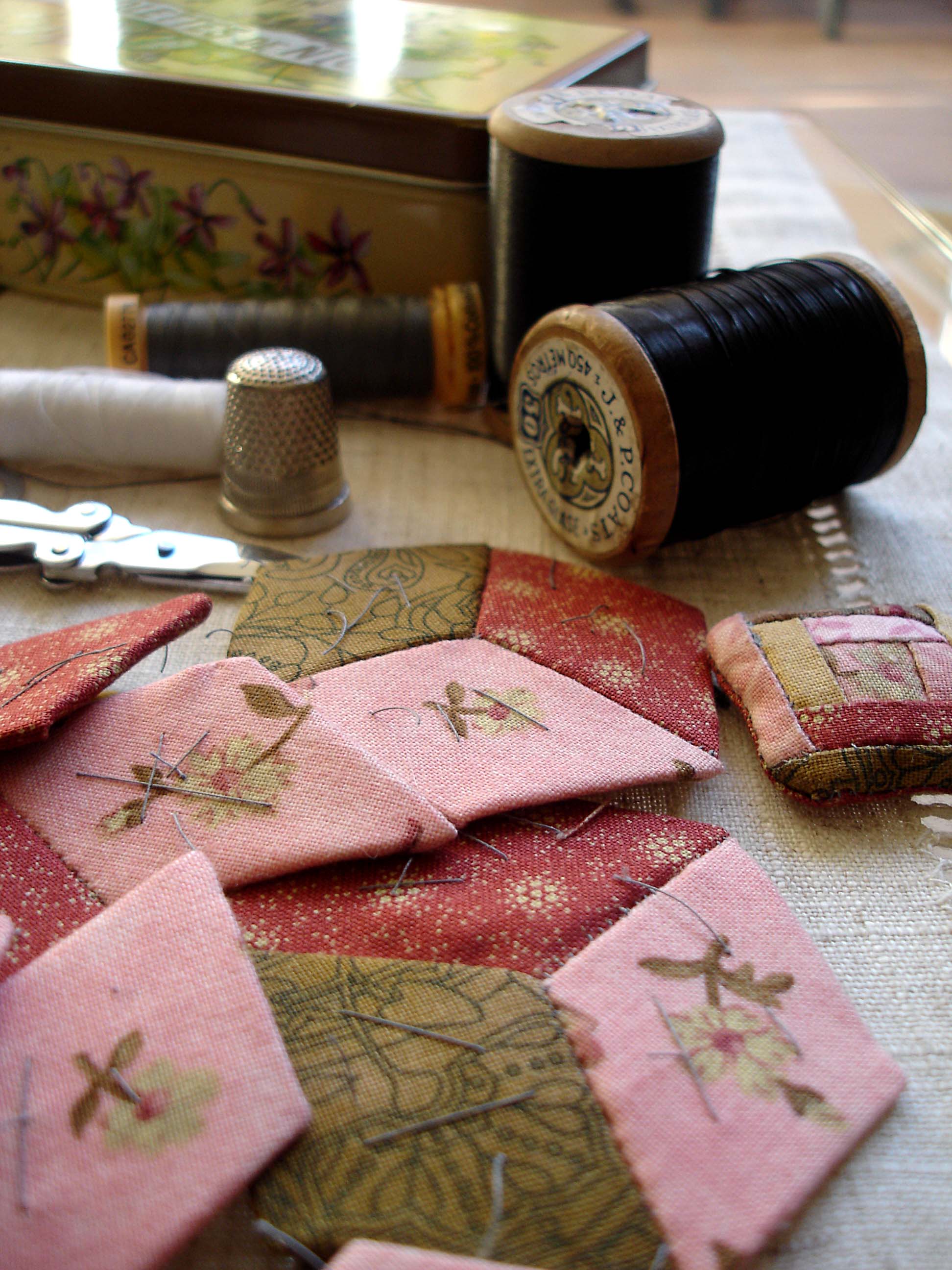The French adjective biscornu means wonky, skewed, irregular, or – if taken literally – twice-horned. The English adjective biscornu doesn’t exist, because English is totally unreliable in its use of the vocabulary it has filched from other languages. Like an overconfident teenager with an unfamiliar appliance, we are certain we can get it to work somehow, without bothering to listen to the instructions from those who’ve been using it longer.
English uses biscornu as a noun, meaning a small pincushion made from two squares of material – or, according to Wikipedia, “the boundary of a unique convex polyhedron….a flattened square antiprism”. (And if you understand that, I’m very happy for you.)
They’re usually made from Aida cloth or embroidery linen, with a counted-thread design, but it turns out you can make them from two squares of ordinary cloth. This is a very useful time to employ what quilters call English Paper Piecing.
I cut two squares of flannel – a traditional fabric for pincushions – and attached them to their papers. Then I realized that while both shared similar shades of blue, one was blue-and-white while the other was blue-and-cream – and therefore looked dingy. I started sewing them together anyway (each corner joins the middle of a side on the other piece) and soon realized that it looked very dingy indeed, close up.
Easily remedied, thought I to myself. Once I’ve removed the papers (when there’s one side and one corner left unsewn) I’ll dye the proto-polyhedron with tea. No – waste of good tea. I’ll dye it with a bit of onionskin. Reader, learn from my mistake. The blue-and-white came out blue-and-cream, just as desired, but alas! the blue-and-cream came out blue-and-HelloYellow!
A vigorous sequence of rinses and a spell in the powerful New Zealand sun, and the yellow was muted. Now it was no more dingy in comparison than it had been before. Once it was properly dry I stuffed it with carded wool, sewed up the last bit, and found a couple of buttons that didn’t look too bad with the new tones. Then I found a bit of bias binding and sewed over the seam, because they really didn’t look that great side by side, still.

All right, it now looks like a donut with cupcake aspirations, and it must be admitted that this particular convex polyhedron is probably more unique than the mathematicians would consider appropriate for a flattened square antiprism (not to mention it’s not that flat, or square) but you can blame that on it being stuffened instead of stiffened. Flannel is a comfy fabric, not a crisp one.
This biscornu is an unassumingly friendly little blobbo, and very useful. As you can see, I was parking my pins in it before I’d even finished attaching the bias binding. I might make another one some day (no onionskin next time!), but in the mean time this will do very well. It goes rather well with its companions in the top of the sewing box, don’t you think?

Is it wonky? Yes. But that’s all right: it’s a biscornu biscornu – wonky is in the job description.


You open up a new world to me with your writing, Deborah, and I learn something new every time. It’s like going around the corner and seeing something from a completely different perspective.
Thank you!! I aim to edify and amuse!